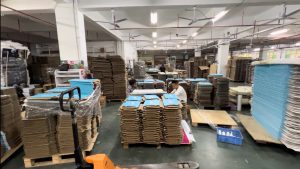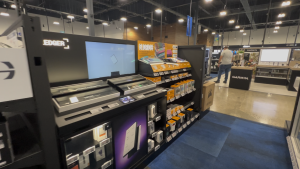In today’s ever-changing retail environment, brands face new challenges every season: product updates, promotional cycles, sustainability demands, and rising logistics costs. Static display structures can no longer keep up.
Enter the era of modular retail display solutions—flexible, efficient, and designed for the future of merchandising.
1. Flexibility for Fast-Changing Retail Needs
Retail strategies evolve quickly, especially in sectors like consumer electronics, beauty, and seasonal goods. Modular displays allow brands to adapt layouts, graphics, and fixtures without replacing the entire structure.
From adjustable shelves to interchangeable panels, modular systems give brands the ability to update their displays instantly for new product launches or campaigns—saving time, materials, and cost.
2. Cost Efficiency Through Reusability
Traditional displays are often single-use, designed for one campaign and discarded afterward. Modular systems, on the other hand, are built to last. By reusing the same core frame and only swapping accessories or visual elements, brands can cut production costs by up to 40% per year.
This reusability also helps retailers reduce setup labor and logistics expenses, making modular displays a win-win for both sides.
3. Sustainability and Material Optimization
Sustainability is no longer optional—it’s an expectation. Modular displays minimize waste by reducing the number of new materials required for each promotion.
At Store Display Group, we design our modular units using eco-friendly materials such as recyclable metal frames, reusable acrylic components, and paper-based decorative panels. This approach not only supports circular production but also helps brands meet the sustainability goals of global retailers.
4. Simplified Global Logistics
Because modular displays are designed for flat-pack or pre-assembled transport, they take up less container space and are easier to distribute internationally. Components can be produced locally and assembled regionally, helping brands reduce freight costs and carbon footprint at the same time.
For global campaigns, this means faster rollout and consistent quality across different markets.
5. Enhanced Brand Consistency Across Channels
With modular systems, brands can maintain a unified look across different retail formats—club stores, specialty shops, or pop-up kiosks—while adjusting individual elements to fit the environment.
This ensures consistent branding, stronger recognition, and a smoother shopper experience across every touchpoint.
Conclusion
The future of retail merchandising belongs to modular design. Modular retail display solutions combine flexibility, sustainability, and cost-effectiveness—empowering brands to adapt faster, operate smarter, and market more sustainably.
At Store Display Group, we’re pioneering this transformation by helping brands design modular display systems that not only fit today’s retail challenges but evolve with tomorrow’s trends.



